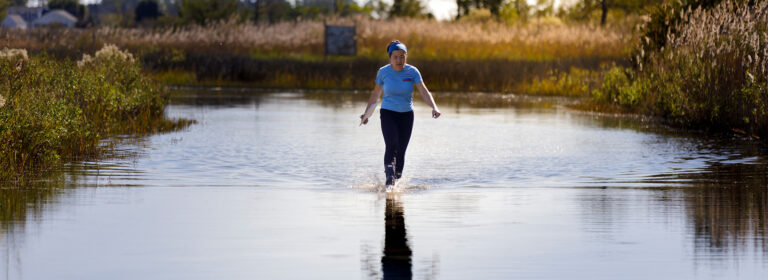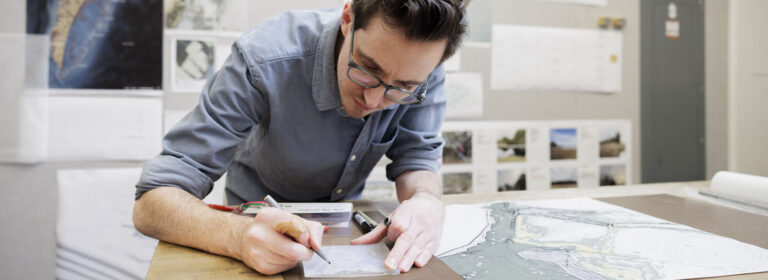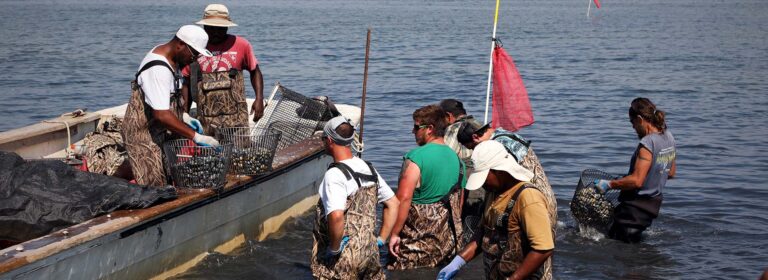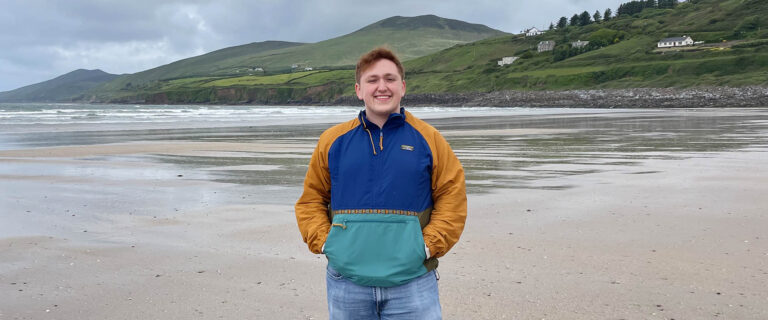A Fellow and Her Endoscope
How crabs shape the race between salt marshes and sea level rise
By Chris Patrick, staff writer
Originally published July, 2016
One day in a salt marsh in Massachusetts, Bethany Williams, a graduate student at the Virginia Institute of Marine Science, plunged a small camera on a wire into a coin-sized hole in the mud. This attracted the attention of a nearby group of students and their teacher, who were on a field trip in the marsh. To satisfy their curiosity, Williams gave the kids an informal lecture about her work, demonstrating how she used the camera—called an endoscope—to spy on crabs burrowed in the mud.
“They went wild for the endoscope,” she recalls. Teaching experiences like this are a pivotal part of her relationship with science.
“I got interested in science when I was a kid, and I think it’s important to instill those values in future generations of scientists,” Williams says. She’s passionate about science education, and especially wants to teach students about the race between sea level rise and salt marshes like the one in Massachusetts.
On the Atlantic Coast, sea level rise threatens to drown salt marshes, ecosystems that sit between land and water and are regularly flooded and drained by salty tides.
But salt marshes are racing sea level rise with the help of a plant called Spartina alternaflora. Spartina is a cordgrass whose roots collect and hold sediment, helping salt marshes grow taller as water levels rise.
This resiliency spells good things for fisheries. According to NOAA’s National Ocean Service, salt marshes provide habitat for more than 75 percent of fisheries species, including blue crabs. Salt marshes also store carbon, reducing the amount in the atmosphere that warms the Earth.
But there’s a catch: Scientists don’t know what role animals play in the salt marsh race against sea level rise. Are critters living in the marshes helping them keep pace? Or do animals slow the sediment build up? Answering these questions can inform marsh-related management decisions.
When she was in Massachusetts, Williams was studying the role of two crab species in this contest. Now, as a Virginia Sea Grant fellow, she will look at the same players in Virginia’s salt marshes.
The two crabs live together in salt marshes from Massachusetts down to Florida, but they affect Spartina in conflicting ways. One, the marsh fiddler crab, helps Spartina grow bigger. When fiddlers burrow into the soil, they oxygenate it and redistribute nutrients, which Spartina likes. The other crab, known as sesarma for Sesarma reticulatum, eats Spartina, causing plant dieback.
To find out what the net effect of these crabs is on Spartina growth and sediment build up, Williams will study three marshes: one on Goodwin Island in the York River, and two on Virginia’s Eastern Shore. She’ll use her popular endoscope to see what crabs are living where in the marsh, and then divvy the area up into meter-by-meter squares with varying ratios of the two crabs, ranging from all fiddler, to half fiddler, to all sesarma.
With grass clippings and soil cores, she’ll measure how much Spartina is growing below and above ground in these squares, as well as how much sediment the plants have already built up. She’ll compare these measurements to the ratio of the two crabs to see if there are any connections.
At one marsh, Williams will block off four types of squares: one that’s only occupied by fiddler crabs, one that’s only sesarma, one that’s occupied by both crabs, and a control with no crabs in it. Later, she’ll take grass and soil measurements to see what the species of crabs do to the marsh on their own and combined.
While doing this research, Williams will continue to quench her passion for science education by teaching high school students at Chesapeake Bay Governor’s School for Marine and Environmental Science about marshes, sea level rise, and her own work.
She already has some experience with teaching. During undergrad, she taught science to elementary school students. She’s also a member of Virginia Scientists & Educators Alliance, or VA SEA. In VA SEA, educators from Chesapeake Bay National Estuarine Research Reserve in Virginia and VIMS help science graduate students at Virginia Sea Grant partner institutions develop lesson plans that will be used by middle and high school teachers.
Williams is currently a master’s student at VIMS. She received her bachelor’s degree in biology from Florida State University in 2015 and hails from Orlando, FL.
“I got interested in science when I was a kid, and I think it’s important to instill those values in future generations of scientists,” Williams said.





